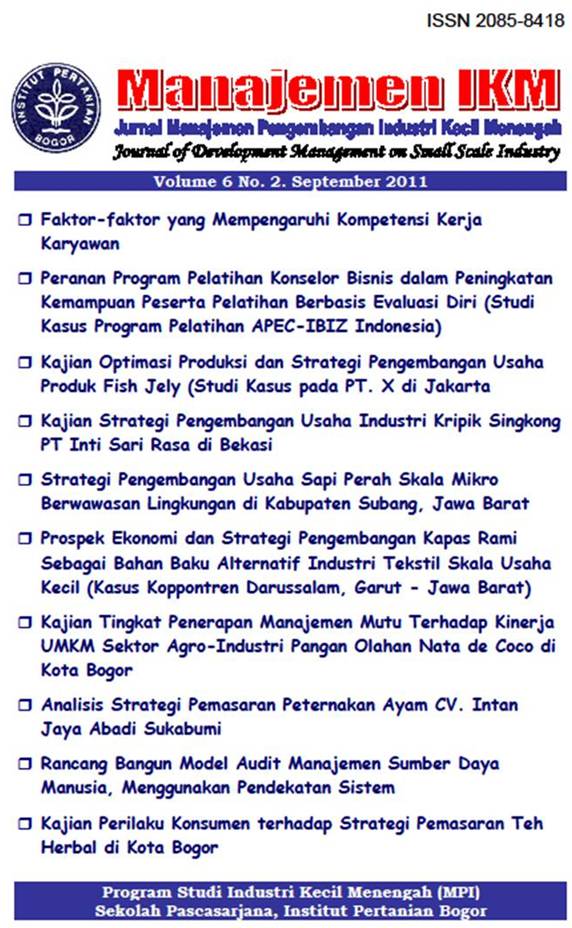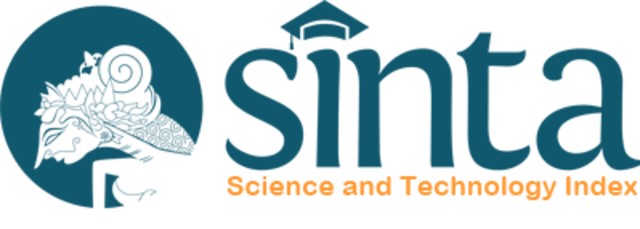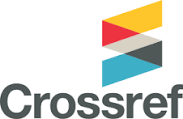Prospek Ekonomi dan Strategi Pengembangan Kapas Rami Sebagai Bahan Baku Alternatif Industri Tekstil Skala Usaha Kecil (Kasus Koppontren Darussalam, Garut-Jawa Barat)
Keywords:
alternative strategy, business competition, social economic impact, TPT
Abstract
The textile industry has a role in the non-oil export of Indonesia. Cotton is the main raw material of textile and products of textile (TPT) in Indonesia. Ninety-nine percent of the domestic needs of cotton is imported from Australia, America and China. The Pondok Pesantren Darussalam Co-operation (Koppontren) has been one of the developers of rami fiber since 1998. The objectives of this study is to assess the description of rami fiber, the economic prospect and its development strategy, as well as to identify internal and external factors influencing its production strategy as the alternative raw material of the textile industry, in order to decrease dependency on import, which has become very high and difficult to obtain. The methods of analysis used were a technical survey using questionnaire, a descriptive analysis, a ratio analysis, and the Strengths, Weaknesses, Opportunities and Threats (SWOT) qualitative analysis. From the descriptive analysis it has been found that (1) the raw material of rami cotton has some advantages, such as resistant to bacteria and fungi, better water absorption, a stronger pull, and better social economic impact; (2) The ratio analysis of the financial report is based on (a) the liquidity rate, covering the Current Ratio (CR) of 1.57, the Quick Asset Ratio (QAR) of 1.41, and the Net Working Capital (NWC) of 0.58; (b) the Solvability Ratio, covering Debt to Asset Ratio (DAR) of 0.08, and the Equity Multiplier of 1.09; (c) the Activity Ratio, covering the Inventory Turn Over (ITO) of 26.7, and the Total Asset Turn Over (TATO) of 0.49; (d) the Profitability Ratio, covering the Profit Margin (PM) of 0.08, the Return on Asset (ROA) of 0.04, and the Return on Equity (ROE) of 0.04; (3) The SWOT qualitative analysis showed the following internal and external factors: (1) Strengths (S): good financial performance and adequate raw material; (2) Weaknesses (W): weak manpower, old production equipment, and simple management; (3) Opportunities (O): availability of market share, product development and government policy; (4) Threats (T): no SNI standard, business competition and low price of imported rami cotton. The analysis resulted in an alternative strategy, such as a combination of (1) “SO”: good financial performance because this has created profit, and availability of raw material for adequate production; (2) “ST”: deciding production cost, and increasing quality of rami cotton; (3) “WO”: development of manpower through training, improvement of production technology, and effectiveness of managerial system in running the business; (4) “WT”: business strategy by focusing on certain grades of products, developing a wider partnership with others, and investing production equipment.Downloads
Download data is not yet available.
How to Cite
JuhanaA., HubeisM., & PandjaitanN. H. (1). Prospek Ekonomi dan Strategi Pengembangan Kapas Rami Sebagai Bahan Baku Alternatif Industri Tekstil Skala Usaha Kecil (Kasus Koppontren Darussalam, Garut-Jawa Barat). MANAJEMEN IKM: Jurnal Manajemen Pengembangan Industri Kecil Menengah, 6(2), 44-53. https://doi.org/10.29244/mikm.6.2.44-53
Section
Vol. 6 No. 2











